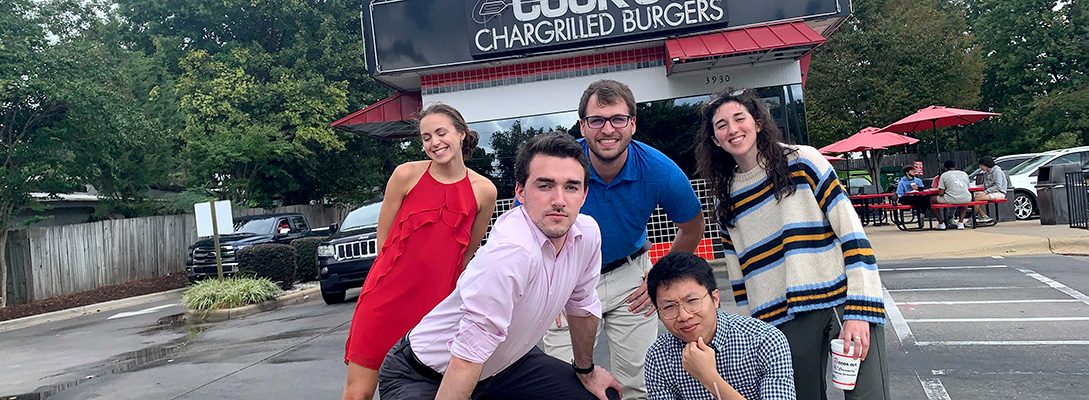Analytics bootcamp at the Institute for Advanced Analytics somehow felt both shorter and longer than six weeks. In many ways it felt as if it flew by, but in hindsight, I can’t believe that my classmates and I were actually able to accomplish as much as we did in only half a summer.
As you might expect from an analytics master’s program, there was a heavy focus on statistics and programming during the summer. The classroom portion of bootcamp mainly consisted of lectures in foundational statistical concepts that I was mostly familiar with, as well as the SAS programming language, which was completely new to me. Accompanying those lectures were lab assignments that allowed us to apply the concepts we had learned in a practical data science context. At the end of the summer, we faced a daunting day of exams, which included a 3-hour written exam on statistical concepts and a 3-hour coding exam based on a combination of statistics and SAS programming. A week later we were given the opportunity to take a SAS certification exam which covered all the material we had learned in our coding classes.
While I found the analytics-based content taught in the classroom to be interesting and challenging, I was just as excited for the professional coaching and development provided by the Institute. Over the course of our six-week bootcamp, I met with all three professional coaches to discuss my future goals. I also attended several fascinating lectures about various “soft skills” including problem solving, technical writing, presenting, and networking. After bootcamp wrapped up, we had a week-long communications training that included giving 8 minutes of individual presentations and a 10-minute team presentation, with feedback provided by peers, staff, and alumni.
One of the most intriguing aspects of the MSA program to me is the focus on team-based learning, and there was certainly plenty of it during bootcamp. We were able to complete the lab assignments collaboratively, which gave us plenty of opportunities to work together and teach other new concepts. We were also formally split into teams of five and assigned two team tasks: a five-minute presentation based on advice from former MSA students, and a summer practicum project.
This project consisted of an open-ended data science prompt, accompanied by a 10-minute presentation given at the end of the summer. Considering that we were learning how to apply many of the important statistical and programming concepts on the fly, it was a huge challenge to pull together the presentation in a little over three weeks. Every team was given the same set of data and the same prompt, so it was interesting to see other teams take different approaches in terms of their analytical direction and presentation style.
At this point, it probably seems like summer bootcamp is all work and no play, but while I did spend a lot of time at the Institute (and the library) this summer, the MSA Class of 2020 is also a social group. Over the course of six weeks, I attended six happy hours, two pool parties, and a potluck with other MSA students. I went to the North Carolina Museum of Art three times with fellow students – once for a tour of the galleries, once for a concert, and once for an outdoor movie night. I’ve met several fellow musicians at the Institute and have enjoyed getting together with them to play music; it’s been a great way to relieve stress in the evenings and on weekends. For me, the highlight of the summer was our class trip to a Durham Bulls game. Almost half of the class was in attendance on a humid Friday night to enjoy some minor league baseball, and those of us that stuck around for the whole game were treated to a surprisingly long and impressive fireworks show.
I’m not sure how I was able to accomplish so much this summer while having fun and eating and sleeping reasonable amounts. Based on the curriculum for the fall, things will only get more hectic from here, but after bootcamp, I’m looking forward to facing the challenges ahead alongside my classmates.

Columnist Kevin McDowell
Data Column | Institute for Advanced Analytics
The Collaborative Blog for Students in the Master of Science in Analytics
